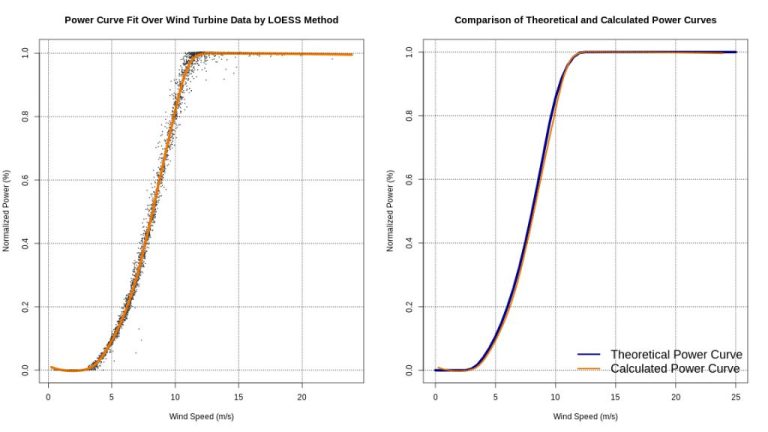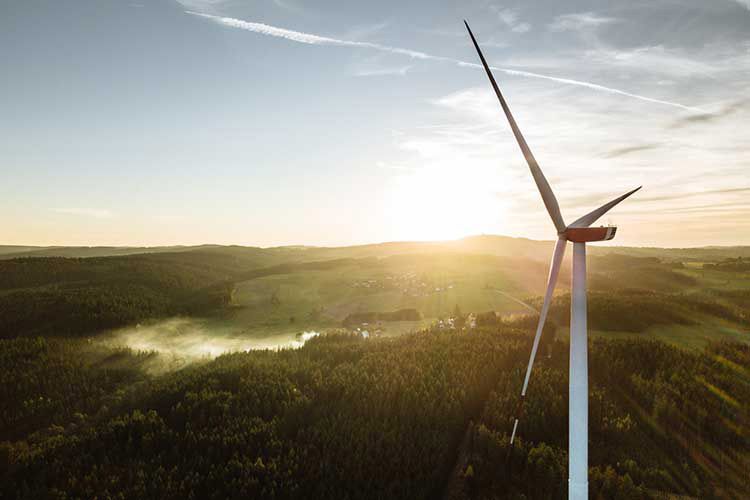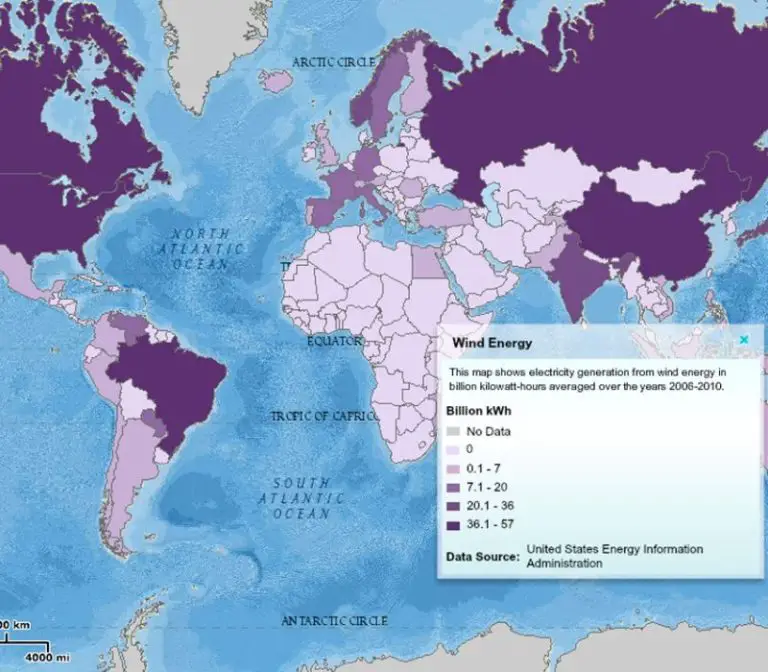How Do You Tell How Windy It Is?
Wind is the movement of air from areas of high pressure to low pressure. It is an important part of weather and climate. Measuring wind gives us valuable information about upcoming weather conditions, potential hazards like storms, and long-term climate trends. Understanding wind patterns can help us prepare for strong winds and wind damage. It also allows us to harness the power of wind for renewable energy. Historically, wind measurement was important for maritime navigation and trade. Overall, measuring wind speed and direction provides data that is useful for science, safety, recreation and business.
Wind Speed Scales
There are a few different wind speed scales used to measure and describe wind speed:
Beaufort Wind Scale: This scale was created in 1805 by Sir Francis Beaufort to help sailors estimate wind speeds. It is a 0-12 scale based on observed conditions at sea and on land. For example, a Force 6 on the Beaufort scale is a “Strong Breeze” with wind speeds of 22-27 knots (25-31 mph or 41-49 km/h).
Kilometers per hour (km/h): This metric unit is commonly used by meteorologists to measure wind speed. It measures the number of kilometers traveled in one hour.
Miles per hour (mph): This imperial unit is also used to measure wind speed in number of miles traveled in one hour.
Knots: A knot is defined as one nautical mile per hour. Knots are commonly used in aviation, boating, and meteorology as the unit for wind speed.
Anemometers
An anemometer is a device used for measuring wind speed. The term is derived from the Greek word anemos, meaning wind. Anemometers are important tools for meteorology and are also used widely for weather forecasting and scientific research.
The most common type of anemometer is the cup anemometer, which consists of 3 or 4 hemispherical cups mounted on horizontal arms attached to a vertical shaft. The cups catch the wind and cause the shaft to rotate. The shaft is connected to a device that counts the revolutions per minute, allowing wind speed to be calculated. The cups are designed to spin easily with minimal friction or resistance.
Other types of anemometers include propeller anemometers, which work on a similar principle but use propeller blades instead of cups. Ultrasonic anemometers use sound waves to measure wind speed. And windmill anemometers look like traditional windmills but have a mechanism to translate rotational speed into wind velocity.
Anemometers can measure wind speeds ranging from just a few miles per hour to over 100 mph. They are an essential technology for studying wind patterns and providing data for weather forecasts, wind energy assessments, and climate research.
Weather Vanes
A weather vane is a tool used to determine wind direction. It consists of an arrow or similar shape mounted vertically on a shaft or spindle. The arrow is balanced so it can freely rotate and point into the wind. As the wind direction changes, the weather vane automatically rotates to align itself with the wind.
Weather vanes are typically mounted high above ground on roof peaks, church steeples, or poles. This allows them to freely catch the wind. Most weather vanes have compass points marked on them showing the main cardinal directions – north, south, east and west. By reading the direction the weather vane is pointing, you can determine the wind direction.
Weather vanes have been used for centuries to help people understand local wind patterns. They are still found today on farms, airports, weather stations and nautical vessels. Observing which way a weather vane is pointing is one of the simplest ways to visualize wind direction.
Wind Socks
Wind socks are a simple but effective tool for visualizing wind speed and direction. They are tubular fabric sleeves that are tapered at one end, with the wider opening facing into the wind. At the tapered end is a heavy weight that keeps the wind sock stabilized. Wind socks are installed in many locations where wind awareness is important, such as airports, schools, and public parks.
As wind flows into the opening of the wind sock, the fabric sleeve fills and extends outward, pointing in the downwind direction. The wind causes the sock to lift and fly horizontally showing wind direction. The wind speed affects how far the wind sock flies and how horizontal it becomes. In light winds, the sock only partially fills and droops downward. As wind speed increases, the sock fills fully and flies outward, becoming completely horizontal at higher wind velocities.
The angle of the wind sock relative to the pole it is attached to gives a visual gauge of the wind speed. Wind socks come in standardized sizes, and the amount they extend horizontally in different wind conditions is predictable. By visually estimating the wind sock’s angle, you can determine an approximate wind speed range. Wind socks that fly straight out indicate the strongest winds. Thus, wind socks offer a simple way to assess wind conditions just by observing their visual orientation.
Flags
Flags are a simple and easy way to get a sense of wind speed just by looking outside. The direction a flag is blowing shows the wind direction, while how stretched out or straight a flag is flying indicates the wind speed.
When there is little to no wind, flags will hang down limply with no motion. As the wind picks up to a very gentle breeze of around 3-7 mph, flags will have slight movement and begin to ripple. Once winds reach a moderate breeze of 8-12 mph, flags will fully extend and flap more vigorously. Higher wind speeds of 13-18 mph will make flags flap rapidly in a strong breeze. At very high winds of 25+ mph in a gale, flags will be stretched completely straight out and flap violently.
The amount of curling at the end of a flag also hints at wind speed. Tight curls indicate lighter winds, while flags whipping and snapping with minimal curling demonstrate stronger gusts. Thus, taking note of a flag’s motion and shape provides a simple way to gauge wind intensity.
Natural Signs
Nature provides many visual cues that can indicate wind speed without any instruments. Here are some examples:
Smoke – The smoke rising from chimneys and smokestacks will slant in the direction the wind is blowing. Fast moving wind will make the smoke move almost horizontally.
Trees – Watch how much trees are swaying and branches are moving. The more movement, the stronger the winds. Listen for creaking branches as well.
Water – Small ripples on the water signifies a light breeze while white caps on waves indicate very windy conditions. The ocean tide can come in quicker with strong onshore winds.
Dust – Look for blowing dust, sand, debris and loose dirt that gets picked up and carried by the wind. The stronger the wind, the larger the objects it can lift and swirl.
Grass & Plants – Tall grass and smaller plants will bend and sway in the wind. The more they move, the windier it is.
Wind Chill – A stronger biting or frigid wind chill is a good indicator of higher wind speeds even on colder days.
Sound – Listen for the sound of wind whipping around buildings or whistling through cracks and openings. The louder it is, the stronger the winds.
Beaufort Scale Examples
The Beaufort Scale provides a way to estimate wind speeds based on visual observations. Here are some examples of wind speeds for different levels on the Beaufort Scale:
Force 0 – Calm: Wind speed less than 1 mph. Smoke rises vertically.
Force 1 – Light air: Wind speed 1-3 mph. Smoke drifts slightly.
Force 2 – Light breeze: Wind speed 4-7 mph. Leaves rustle, you can feel the wind on your face.
Force 3 – Gentle breeze: Wind speed 8-12 mph. Small branches move, flags flap.
Force 4 – Moderate breeze: Wind speed 13-18 mph. Dust and loose paper blow around, small branches move.
Force 5 – Fresh breeze: Wind speed 19-24 mph. Small trees sway, wavelets form on ponds.
Force 6 – Strong breeze: Wind speed 25-31 mph. Large branches move, umbrellas are difficult to control.
Force 7 – Near gale: Wind speed 32-38 mph. Whole trees sway, walking into the wind is challenging.
Force 8 – Gale: Wind speed 39-46 mph. Twigs and small branches can break off trees, generally impedes progress.
Force 9 – Strong gale: Wind speed 47-54 mph. Light structural damage occurs, slate blows off roofs.
Force 10 – Storm: Wind speed 55-63 mph. Trees uprooted, considerable structural damage.
Force 11 – Violent storm: Wind speed 64-72 mph. Widespread vegetation and structural damage likely.
Force 12 – Hurricane force: Wind speed 73+ mph. Severe widespread damage to vegetation and structures.
Historical Wind Speeds
Throughout history, extremely high and low wind speeds have been recorded as weather events across the globe. Understanding the extremes of wind speed provides perspective on just how strong wind can get.
The highest wind speed ever officially recorded was during Tropical Cyclone Olivia in 1996. Sustained winds reached an incredible 253 mph at Barrow Island, Australia. Wind speeds stayed above 155 mph for over 18 hours straight. The extreme winds caused significant damage along the coast.
In the U.S., the highest wind speed measured was during a tornado in 1999. An EF5 tornado that hit Oklahoma clocked winds of 301 mph. Tornado wind speeds are estimated based on damage, so actual speeds may be even higher.
On the opposite end, the lowest wind speeds tend to occur in areas surrounded by natural wind blocks like mountains or forests. The lowest wind speed ever recorded was 1 mph in the Allegheny Mountains in Pennsylvania in 1958.
Looking through historical peak wind speeds demonstrates the immense power wind can unleash during extreme weather events. It also shows the large range of wind speeds that can occur from location to location.
Conclusion
In summary, there are various tools and techniques available for measuring wind speed. The most accurate devices are anemometers and weather vanes, which can quantify wind velocity and direction. For a more general sense of wind conditions, wind socks, flags, and natural signs like blowing leaves provide visual clues about wind strength. Historical weather records documenting past wind speeds also help put current conditions into perspective. While measuring wind speed precisely takes scientific instruments, observing the effects of wind on the natural environment can provide a good rough estimate. Whether relying on numbers from an anemometer or simply feeling the breeze on your face, appreciating the wind conditions around you connects us with the atmosphere and better informs many of our daily activities.




